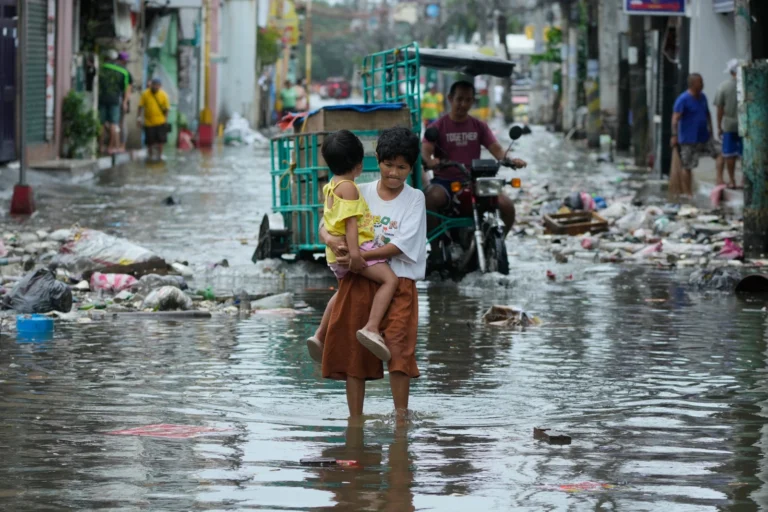Typhoon Fung-wong struck the northern Philippines on Sunday, leaving at least 18 people dead and causing widespread floods, landslides, and power outages. The storm has since weakened into a tropical storm over the South China Sea and is moving northwest toward Taiwan, where it could arrive by Thursday.
The super typhoon, with maximum sustained winds of 185 kph (115 mph) at landfall, hit Aurora province before moving through mountainous northern provinces and agricultural plains. More than 1.4 million people were evacuated to emergency shelters or relatives’ homes ahead of the storm, with about 240,000 still in evacuation centers on Tuesday.
Flash floods and landslides were the deadliest aspects of Fung-wong. In Nueva Vizcaya, three children died in a landslide, and four others were injured. Nearby Kalinga province reported two deaths, two missing, and several injuries due to another landslide. Officials in Catanduanes, Eastern Samar, Mountain Province, and Ifugao also confirmed fatalities linked to collapsed homes and exposed electrical wires.
Floodwaters trapped residents on rooftops in at least 132 northern villages. More than 4,100 homes were damaged. Local authorities warned that dangerous rains continue in parts of northern Luzon, including metropolitan Manila, even as the typhoon moves away. Rescue, relief, and disaster-response operations are underway.
Philippine President Ferdinand Marcos Jr. declared a state of emergency in response to the twin impacts of Typhoon Kalmaegi last week and Fung-wong. Kalmaegi killed at least 232 people in central provinces before also striking Vietnam, where five more were killed.
Schools and government offices in the affected regions remained closed on Monday and Tuesday. Domestic and international flights were canceled, and more than 6,600 commuters and cargo workers were stranded in ports as the coast guard prohibited ships from entering rough seas.
Typhoon Fung-wong, known locally as Uwan, highlights the Philippines’ vulnerability to natural disasters. The country experiences roughly 20 typhoons and storms each year, in addition to frequent earthquakes and over a dozen active volcanoes, making it one of the most disaster-prone countries in the world.
Officials are urging residents to stay alert for potential flooding and landslides as the storm approaches Taiwan. Meteorologists warn that continued heavy rains could trigger further damage in northern Luzon and surrounding areas.







